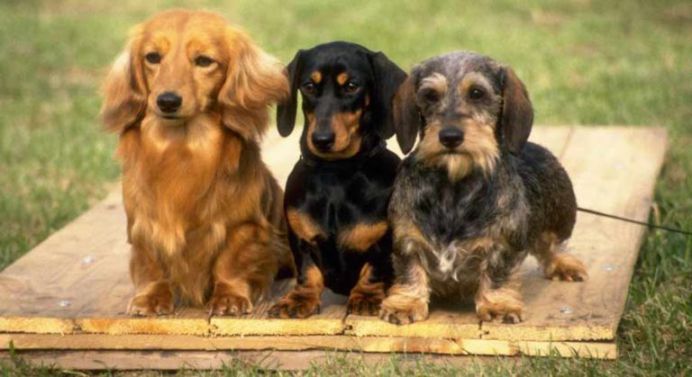Curious about Where Are Wiener Dogs From? Find out the answer in the article below with Alibay Store.
The German Origins of Dachshunds
Dachshunds, commonly known as Wiener dogs. Dachshunds originated in Germany, where they were bred for a specific purpose: hunting. The name “Dachshund” is derived from two German words: “Dachs,” meaning badger, and “Hund,” meaning dog. This translates to “badger dog,” which gives insight into the breed’s original purpose. Dachshunds were specifically developed to hunt and flush out badgers, known for being aggressive and hard to catch.
In the early 17th century, German hunters needed a dog that could track scents on the ground, dig into burrows, and be fearless in the face of a dangerous badger. Their solution was the Dachshund. The breed was small enough to enter the dens of badgers but strong enough to face them head-on. These dogs were relentless hunters, using their sense of smell to track their prey and their tenacious personalities to complete the task.
Dachshunds were not just limited to hunting badgers, though. They also became popular for hunting smaller game such as rabbits, foxes, and even wild boars. Their versatility as hunters made them valuable companions for hunters in Germany and across Europe.
The Development of the Dachshund Breed
The breed’s development was carefully controlled by German breeders, who sought to create a dog perfectly suited to its task. Over time, two main sizes of Dachshunds emerged: the standard Dachshund and the miniature Dachshund.
- Standard Dachshunds were bred to hunt larger prey, such as badgers and wild boars. These dogs typically weigh between 16 and 32 pounds and were the preferred size for more challenging hunting expeditions.
- Miniature Dachshunds, on the other hand, were bred to hunt smaller game like rabbits. Weighing less than 11 pounds, they were more agile and could fit into smaller burrows and dens.
In addition to size, Dachshunds were bred with three distinct coat types—smooth, long-haired, and wire-haired—each suited for different hunting environments. Smooth-coated Dachshunds were best for working in dense forests, while long-haired and wire-haired varieties offered protection in colder or rougher terrains.
Dachshunds Beyond Hunting: From Field to Family
As hunting declined in popularity and became more of a sport, the role of Dachshunds began to evolve. Their adorable appearance and lively personalities made them excellent companions, and they started to transition from working dogs to beloved household pets.
By the 19th century, Dachshunds became increasingly popular with European royalty, including Queen Victoria of England, who adored the breed. This royal endorsement further boosted their popularity as pets. Over time, they became a favorite breed among dog lovers not just in Europe but worldwide.
During the late 19th and early 20th centuries, Dachshunds were exported to the United States, where their popularity grew rapidly. In 1885, the American Kennel Club (AKC) officially recognized the breed, marking the start of their strong presence in American households.
The Impact of World War I and II on the Dachshund Breed
While Dachshunds were growing in popularity, they faced a major challenge during World War I. Due to their strong German association, anti-German sentiment caused the breed to temporarily lose favor, particularly in the United States and the United Kingdom. They were even referred to as “liberty hounds” during this time to distance them from their German roots.
However, despite the temporary decline in popularity, Dachshunds regained their status after the war, thanks to dedicated breeders who continued to champion the breed. They eventually regained their place as a beloved breed and continued to grow in popularity through the 20th century.
Dachshunds in Modern Times
Today, Dachshunds are cherished for their affectionate, playful, and sometimes stubborn personalities. They are known for being fiercely loyal to their owners, making them excellent companion dogs. Despite their small size, Dachshunds often exhibit a “big dog” attitude, displaying bravery and confidence in various situations. Their long bodies and short legs are still iconic features that make them stand out among other breeds.
Dachshunds are also popular in dog shows, where they continue to impress judges and audiences alike. Their distinct look, combined with their spirited nature, has kept them a favorite in the competitive dog world.
While Dachshunds are no longer primarily used as hunting dogs, their natural instincts remain strong. Many Dachshunds still enjoy digging, exploring small spaces, and chasing smaller animals, echoing the traits that were initially bred into them centuries ago.
Health and Care for Dachshunds
Due to their unique body structure, Dachshunds can be prone to certain health issues, particularly back problems like intervertebral disc disease (IVDD). Owners need to be mindful of their Dachshund’s weight and avoid activities that could strain their spines, such as jumping from high places.
Regular exercise is also important for Dachshunds, as they are an energetic breed that enjoys walking and playing. However, due to their hunting origins, they may have a strong prey drive and should be kept on a leash in open areas where small animals are present.
Conclusion: Where Are Wiener Dogs From?
In summary, Dachshunds, or Wiener dogs, originated in Germany, where they were bred to hunt badgers and other small game. Over the centuries, they have evolved from hardworking hunting dogs to popular family pets, cherished for their unique looks and loyal nature. Though their origins lie in the forests and fields of Germany, Dachshunds have made their way into homes and hearts around the world.
If you’re a Dachshund lover, celebrate the breed’s rich history with a Wiener Dog Pillow from Alibay Store. It’s a perfect way to honor your love for these iconic dogs and bring a bit of their charm into your home!






